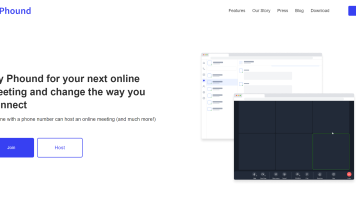We are in the midst of a violent transformation of our communications networks which involves an immense amount of control being wrestled away from carriers and given to developers and end-users. Visit the iTunes App store or check out what is happening with free turn-by-turn GPS on an Android 2.0 device to get an idea of what I mean. The trend is not new by any means; the first time communications systems were allowed to interoperate with computer systems was in the eighties when the first Rockwell Automatic Call Distribution (ACD) systems started to communicate with IBM mainframes to give us CTI or computer telephony integration. This allowed screen pops which dipped into CRM databases allowing contact center agents to know who was calling and more than likely why. Moore’s Law coupled with telephony hooks like TAPI and TSAPI from Microsoft and Novell respectively meant this capability went from costing around a million dollars to tens of thousands of a dollars just a decade later.
Enterprise communications systems have continued to open up and hosted IVR systems, application generators and APIs for DSP resource boards from companies like Dialogic and Aculab allowed greater and greater telephony transformation allowing migration from fixed-function communications systems to more open software-controlled components which could be mixed and matched in a best-of-breed fashion.
The Internet accelerated this trend with its ability to allow cloud-based solutions to be easily accessed and mashups has been a great catalyst – allowing complex data to be represented in new and more interesting ways. Today we can combine the power which we were given by companies like Dialogic and marry them with the cloud and this means anyone can now develop sophisticated applications which leverage all internet and corporate data.
And when you combine open APIs, mashups, communications and social networking in a well thought-out and integrated fashion you are able to provide levels of productivity and customer service heretofore not possible. Any corporate or government process which has friction due to communications delays between people can be lubricated by the effective use of communications technology as it intersects with APIs and rich information sets which can live anywhere.
Perhaps the most respected name in the business of voice mashups is Thomas Howe, CEO, Light and Electric. If you want to know the past, present and future of communications – especially as it pertains to the cloud, you want to speak with Thomas and get his thoughts. If you are a carrier, large enterprise, integrator or government organization, you need to pick his brain to position your organization to take advantage of the ongoing evolution of communications.
Thomas and I have spoken over the past years about how TMC would love to partner to bring his visionary thoughts (all the good stuff locked up in his grey matter) to our audience of millions of global communications and technology decision-makers.
I am happy to announce that at the next ITEXPO which takes place January 20-22, 2010 in Miami, FL you will get a chance to come and hear Thomas speak. In addition you will soon be able to benefit from webinars and screencasts which our companies will jointly participate in.
I hope to see you at the show and as always, at TMC we are looking to provide you with the absolute best information on communications and technology – allowing you to quickly learn whatever you need to further your career and meet your organization’s evolving needs.





